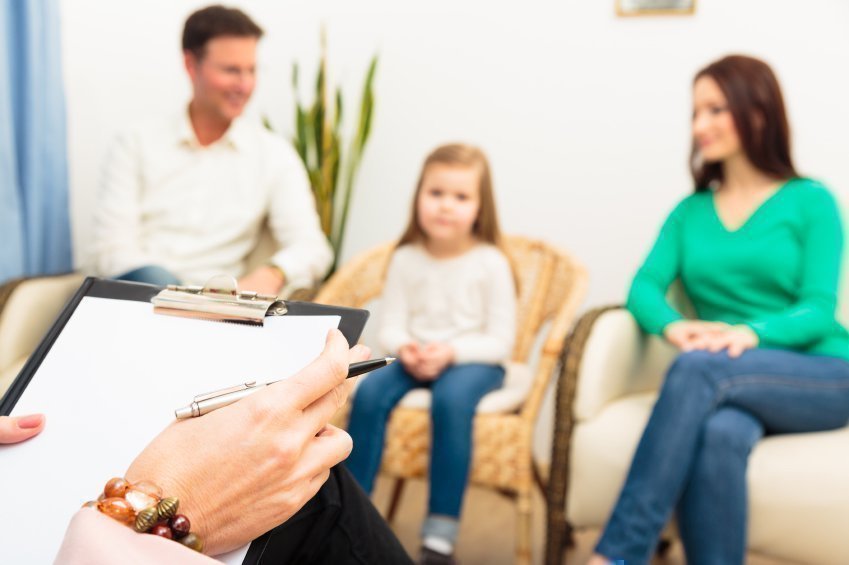Features of child hypnosis
It is impossible to call hypnosis for children a common method of treatment, because during this process irreparable harm can be done to the young psyche.
Hypnosis is rarely used to treat children.
Features of the method of introduction to hypnosis
Children of different ages respond to hypnosis in different ways. The most suggestible guys are from 7 to 14 years old. Until this age, the immature cerebral cortex does not effectively influence the patient, and after that, awareness prevents high-quality immersion in a hypnotic trance.
The personality of the hypnotherapist is very important. He must be calm and know exactly what he is doing. Children are especially sensitive to the doctor's emotional state. They may be distracted by minor stimuli.
No less important are the attitudes of the parents and their attitude towards the therapist and therapy. They cannot be present or film the session on camera, this will cause distrust of the little patient.
Stages of hypnosis
There are three stages of child hypnosis:
- Light. The patient is in a comfortable position, relaxed and fully trusting the therapist. His mind is still working. The child carefully observes the process. At this stage, he still may not obey the doctor, stay in the stage of active wakefulness.
- Average. The patient's breathing is adjusted to the therapist's breathing. Deeper relaxation. The eyes are completely closed. A small patient gradually enters a trance state and is already losing concentration. Already at this stage, suggestion can begin.
- Deep. Complete relaxation, consciousness turned off. At this stage, the therapist can instill in the mind of the patient the necessary useful attitudes.
The success of a hypnosis session directly depends on the mental state of the baby, the behavior of the doctor and parents. It is better to consult in advance and establish a connection with the child. Explain how he will feel and what will happen.

The success of the session depends on the psychological state of the child.
Methods of introduction to hypnosis
There are many methods of inducing a hypnotic state. And there are two ways to submit it - direct and indirect.
The direct method is more commonly used with adolescent children. The patient must understand what is happening and be ready to cooperate with the hypnotherapist.
Indirect (or mediated) hypnosis helps you communicate through an object. Toys are most suitable for children: stress is relieved, the child is in a relaxed state. The therapist at first turns not to the patient himself, but to his favorite toy. After several sessions, you can abandon the plush assistant and communicate directly with the child.
Reasons for using hypnosis
Hypnosis helps to get rid of many problems:
- irrational fears;
- pathological anxiety;
- enuresis (urinary incontinence);
- ectopresis (fecal incontinence);
- mutism (complete absence of speech);
- logoneurosis;
- bad habits (sucking a finger, biting nails, pulling out hairs, tearing off crusts on wounds);
- nervous tick;
- psychosomatic diseases and psychomotor disorders (neurosis, various forms of psychosis, phobic and obsessive-compulsive disorders, etc.);
- eczema, bronchial asthma, metabolic problems, obesity;
- relief of pain syndrome;
- insomnia;
- cognitive problems (impaired memory, attention, thinking).
Hypnosis is also used in the treatment of birth defects and nervous diseases. It helps to get rid of the child from stuttering, epilepsy and agnosia.
Types of hypnosis
Different types of hypnosis involve the use of different techniques of suggestion. Distinguish:
- regressive hypnosis. It will help get rid of amnesia, restore the child's memory and memories. Based on reincarnation.
- Erickson hypnosis. It is especially effective if you need to find out about the hidden talents of the baby. It can be used when the child is 10 years old or older.
- Hypnosuggestive (classic) hypnosis. The toughest of all types of hypnotherapy. It implies a clear announcement of commands, which can scare the child. The hypnologist gives specific instructions for action. This type of hypnosis is used if the child is 15 years old. At an earlier age, the procedure has more negative consequences (mental disorders and deviations) than positive ones.
The safest type of hypnotherapy for children is Ericksonian. In the process, the doctor speaks in a calm voice, which does not scare the baby. The hypnologist does not give clear commands or instructions, but offers them: the patient has the freedom to choose whether to accept the suggestion or reject it.
Entering and exiting a trance should be calm and slow, because a sharp transition between states can greatly frighten a baby.
Pros and cons of hypnosis
Like any treatment technique, hypnosis has its opponents and advocates. The positive aspects of this procedure include a rather high percentage of successful treatment. Relapses are rare, and the patient does not take an active and conscious part in the process, which greatly simplifies the work with children.
Dependence on the therapist is the main disadvantage. Before conducting hypnosis sessions, parents should very carefully choose a doctor according to the following characteristics:
- competence;
- the ability to establish contact with the child;
- calm voice, pleasant timbre;
- polite communication.
The young patient cannot yet engage in self-hypnosis, so he must have confidence in the doctor, not be afraid of him. Otherwise, the psychologist should be changed.
After hypnotherapy sessions, some patients experience drowsiness and a breakdown. Chronic diseases may even worsen.
It is worth remembering that hypnosis treatment does not replace psychotherapy sessions or medication. Therefore, it is difficult to say that only hypnosis brings positive results in the process of complex treatment.

The young patient must fully trust the therapist
Conclusion
Hypnosis is not a panacea for childhood diseases. Despite its effectiveness, it can have negative consequences in the form of mental disorders or exacerbation of the problem.



